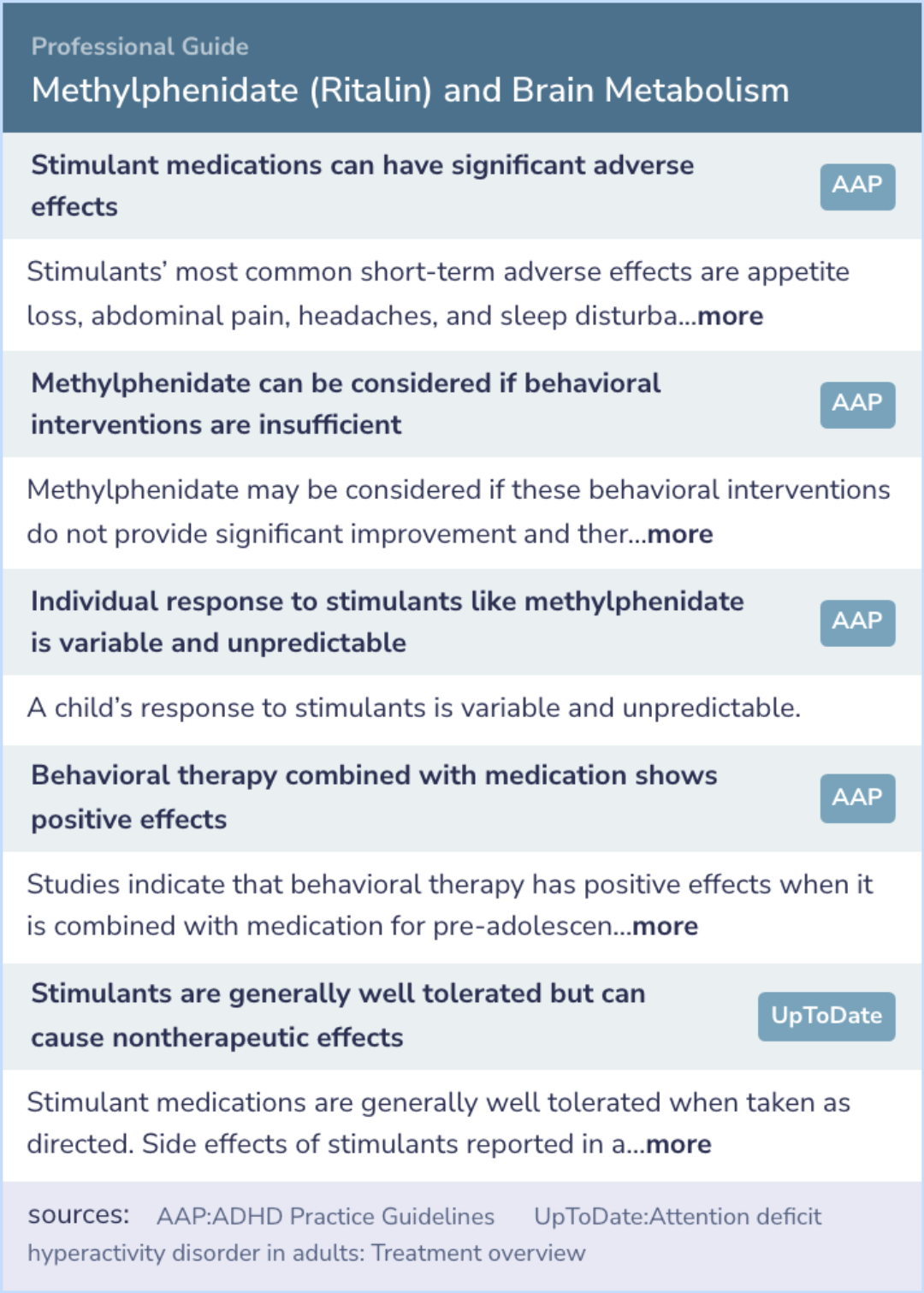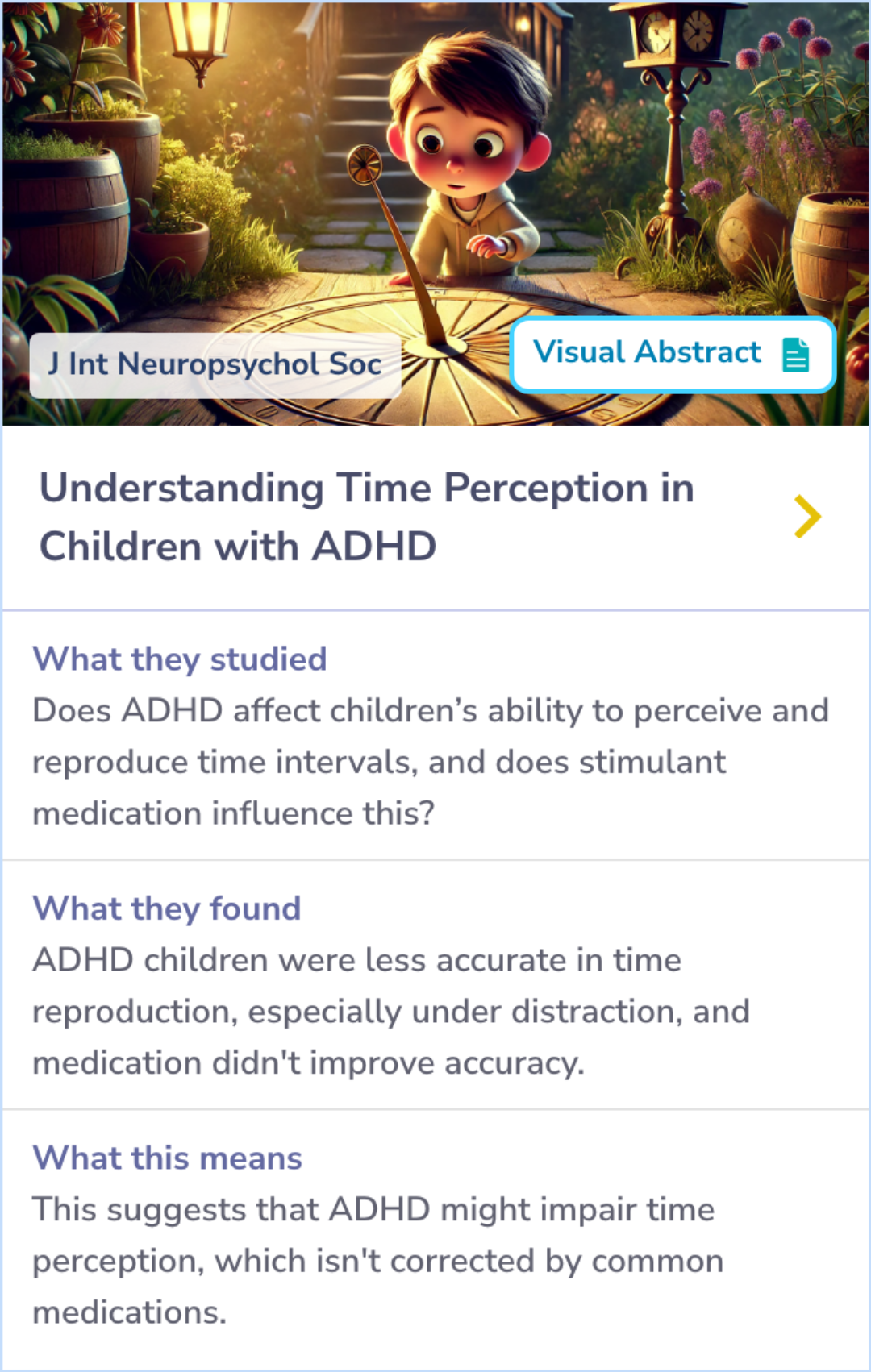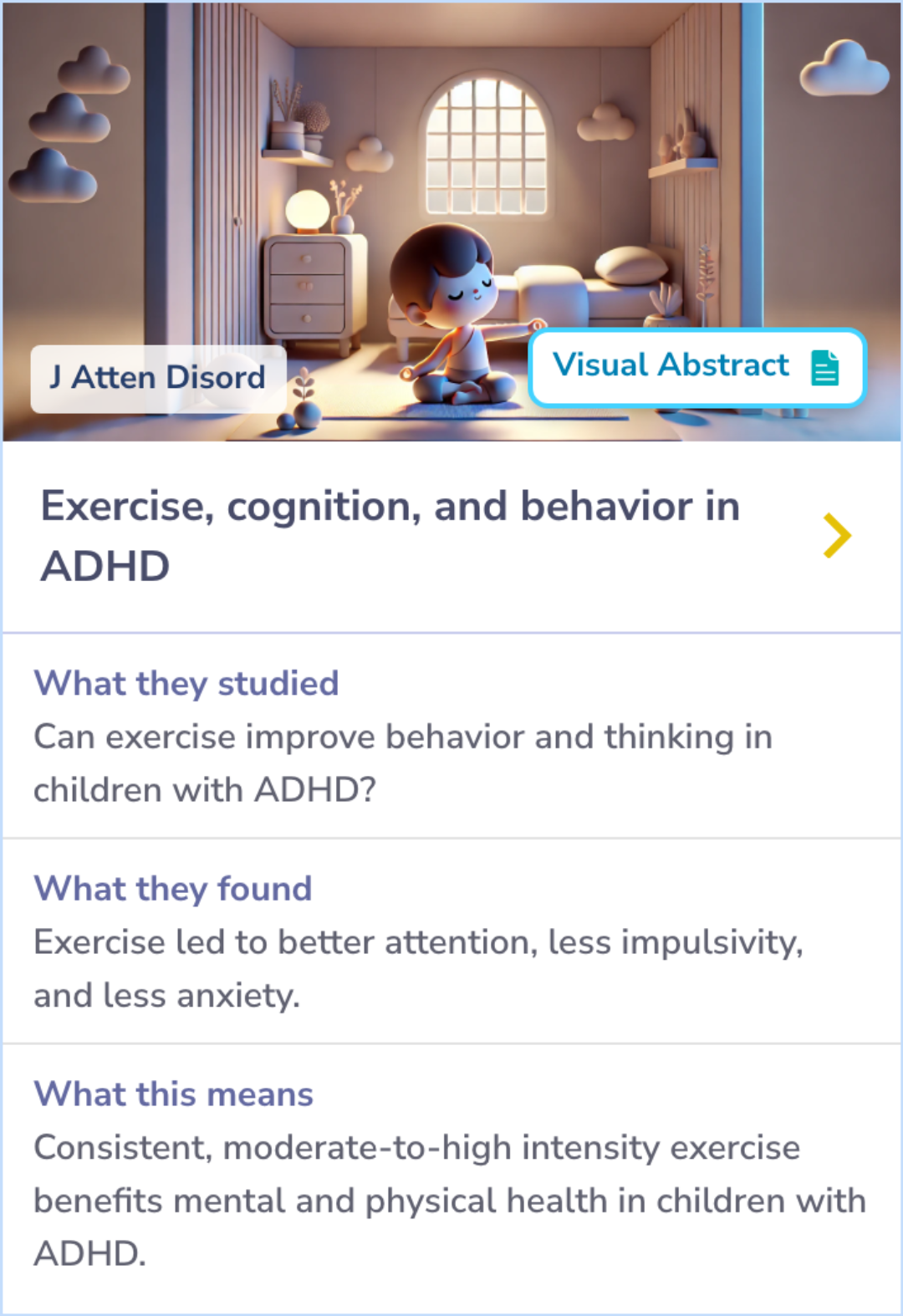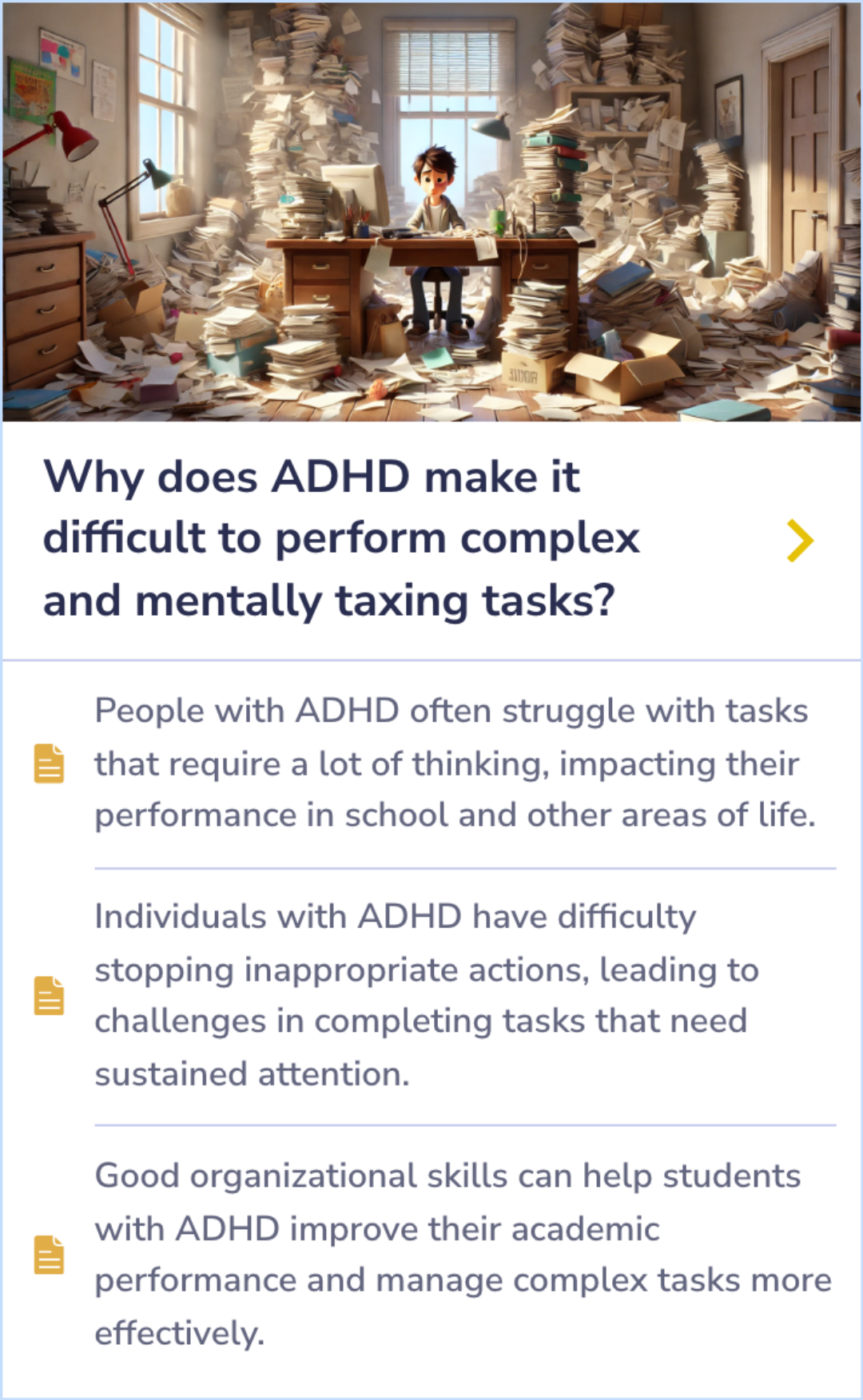Ritalin Paper Database
Visual Abstract
Effects of methylphenidate on regional brain glucose metabolism in humans: relationship to dopamine D2 receptors
Methylphenidate (Ritalin) and Brain Metabolism
October 18, 2024
author
Volkow ND, Wang GJ, Fowler JS, Logan J, Angrist B, Hitzemann R, Lieberman J, Pappas N
journal
Am J Psychiatry
Date Published
1997 Jan
Why link to a visual abstract?
What is a visual abstract?
Original
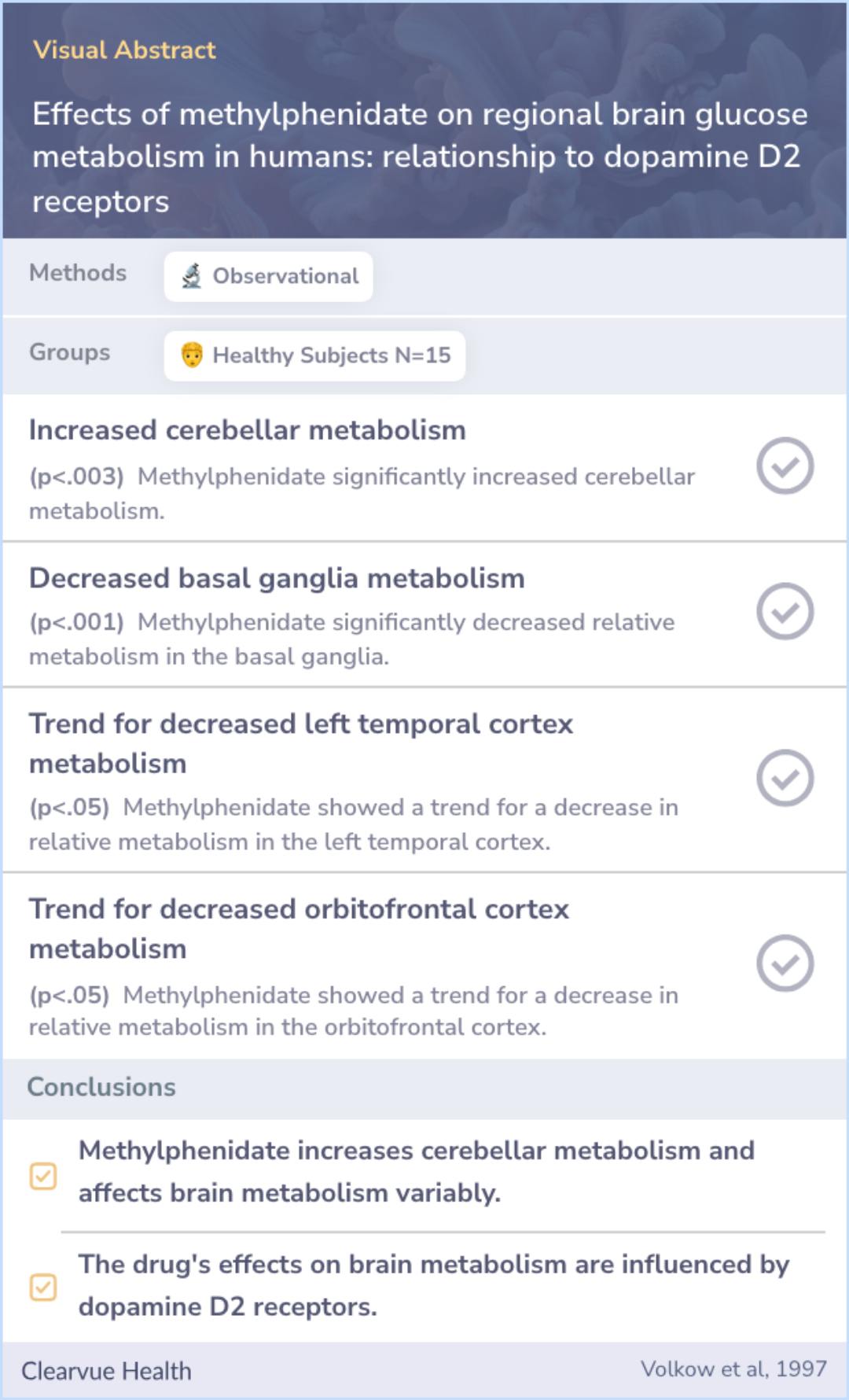
Study Summary
🔬
What They Studied
The researchers wanted to find out if baseline dopamine activity affects how people respond to methylphenidate and to see the brain's metabolic response patterns to increased dopamine activity.
💡
What They Found
They found that methylphenidate increased brain metabolism in some areas and decreased it in others, with consistent increases in the cerebellum.
📚
What This Means
These findings suggest that the effects of methylphenidate on brain metabolism vary among individuals but consistently increase metabolism in the cerebellum. This aligns with current evidence that methylphenidate affects brain activity and dopamine levels.
Study Summary
Study Overview
The study set out to investigate how baseline dopamine activity influences the brain's response to methylphenidate. It aimed to understand how dopamine receptors affect brain metabolism when exposed to the drug.
The findings revealed that changes in brain metabolism were linked to dopamine receptor availability. Methylphenidate consistently increased cerebellar metabolism but showed variable effects in other regions, like the frontal and temporal cortices.
The findings revealed that changes in brain metabolism were linked to dopamine receptor availability. Methylphenidate consistently increased cerebellar metabolism but showed variable effects in other regions, like the frontal and temporal cortices.
Abstract: background
The authors' goals were to determine whether baseline dopamine activity contributes to response to methylphenidate and to assess the pattern of metabolic responses associated with enhanced dopamine activity.

Study Goals
"The authors' goals were to determine whether baseline dopamine activity contributes to response to methylphenidate and to assess the pattern of metabolic responses associated with enhanced dopamine activity."
Key Mechanism
"The significant association between metabolic changes in the frontal and temporal cortices and in the cerebellum and D2 receptors suggests that methylphenidate's metabolic effects in these brain regions are due in part to dopamine changes."
Consistency in Cerebellar Effects
"Methylphenidate induced variable changes in brain metabolism, but it consistently increased cerebellar metabolism."
Study Summary
Methods
The researchers conducted brain scans on 15 healthy adults using a special imaging technique called positron emission tomography (PET). This technique helps measure how the brain uses glucose, a form of sugar, after two doses of methylphenidate (Ritalin, Concerta).
They also measured dopamine receptor levels in the brain to see how they related to changes in brain metabolism caused by the medication.
They also measured dopamine receptor levels in the brain to see how they related to changes in brain metabolism caused by the medication.
Abstract: methods
They used positron emission tomography with 2-deoxy-2[18F]fluoro-D-glucose to evaluate the effects of two sequential doses of methylphenidate on brain metabolism in 15 healthy subjects. Dopamine D2 receptor availability was measured with [11C]raclopr...more

Study Summary
Results
The study found that methylphenidate (Ritalin, Concerta) increased brain activity in some regions and decreased it in others. Notably, it consistently raised activity in the cerebellum, which helps control movement.
Subjects with higher dopamine receptor levels showed increased activity in the frontal and temporal brain areas, while those with lower receptor levels experienced decreased activity. This suggests that dopamine plays a key role in how the brain responds to the medication.
Subjects with higher dopamine receptor levels showed increased activity in the frontal and temporal brain areas, while those with lower receptor levels experienced decreased activity. This suggests that dopamine plays a key role in how the brain responds to the medication.
Abstract: results
Methylphenidate increased brain metabolism in six subjects, decreased it in two, and did not change it in seven; however, it consistently increased cerebellar metabolism. Methylphenidate significantly increased "relative" (region relative to the whol...more
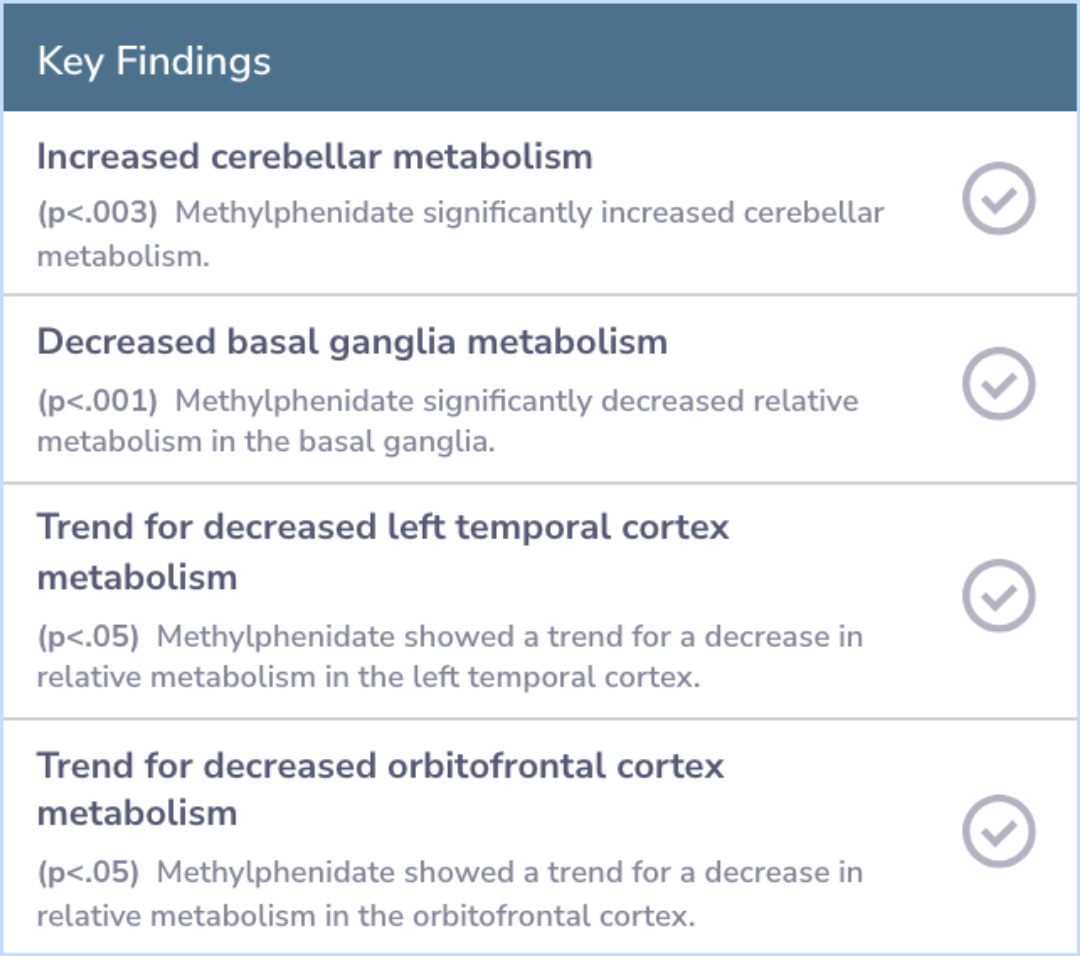
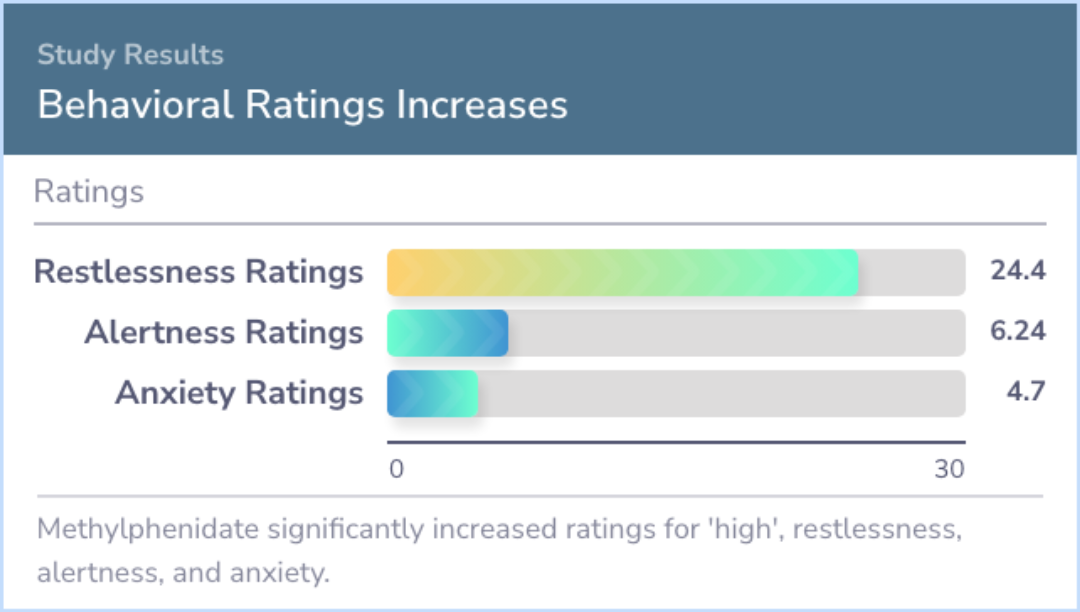
Study Summary
Conclusions
Methylphenidate (Ritalin, Concerta) causes varied effects on brain metabolism, but it consistently boosts activity in the cerebellum. It also reduces relative activity in a region called the basal ganglia, which is involved in movement.
The study suggests that differences in dopamine receptor levels may explain why people respond differently to methylphenidate, particularly in brain regions related to movement and higher cognitive functions.
The study suggests that differences in dopamine receptor levels may explain why people respond differently to methylphenidate, particularly in brain regions related to movement and higher cognitive functions.
Abstract: conclusions
Methylphenidate induced variable changes in brain metabolism, but it consistently increased cerebellar metabolism. It also induced a significant reduction in relative metabolism in the basal ganglia. The significant association between metabolic chan...more
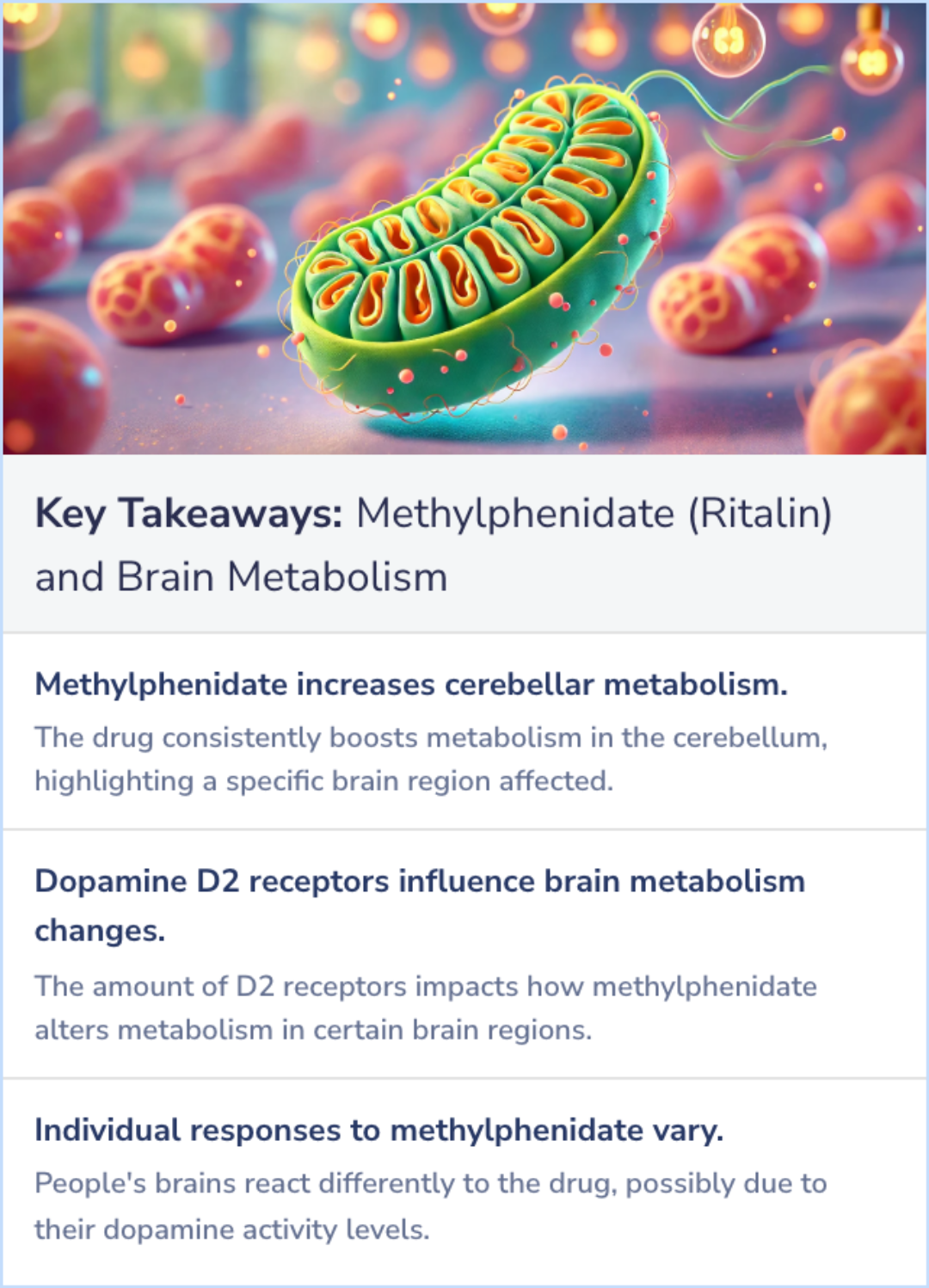
Background Information
Patient Guide
🧠
Mechanism of Action
Blocks norepinephrine and dopamine reuptake, increasing their concentration and enhancing brain activity.
🧠
Psychiatric Risks
May worsen symptoms of psychosis or bipolar disorder, underlining the need for careful patient monitoring.
❤️
Cardiovascular Monitoring
Requires monitoring for exacerbation of heart conditions, emphasizing its significant cardiovascular impact.
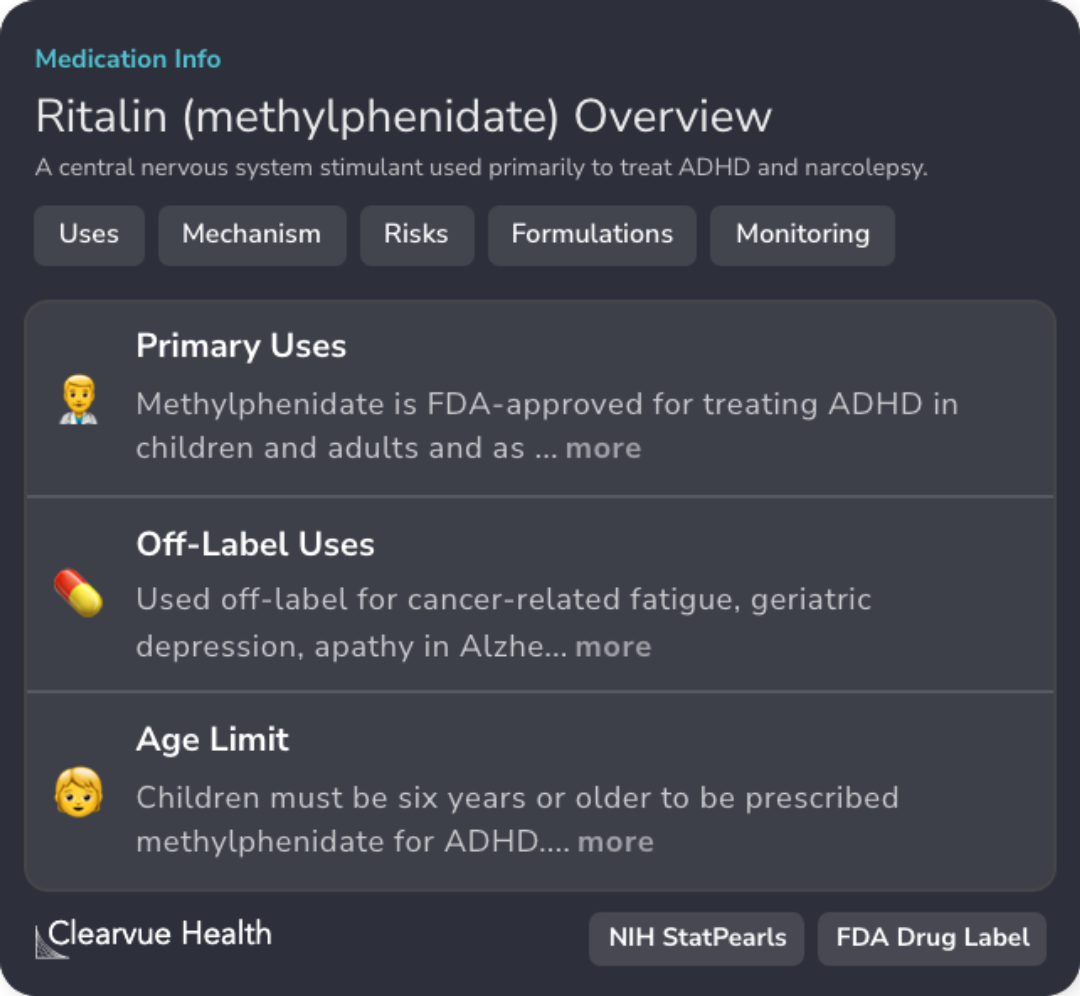
Professional Guide
Expert Opinion: Methylphenidate (Ritalin) and Brain Metabolism
The findings suggest that methylphenidate's impact on brain metabolism varies among individuals, which is consistent with the professional guidelines. Current recommendations highlight methylphenidate as the first-line pharmacologic treatment for preschool children with ADHD due to insufficient rigorous studies on other medications.
Behavioral interventions are preferred initially, with methylphenidate considered if these are insufficient.
Stimulants like methylphenidate can have significant adverse effects, including appetite loss and sleep disturbance.
Combining medication with behavioral therapy or CBT is advised for better outcomes, especially in adults.
Overall, response to stimulants is variable, emphasizing the need for individualized treatment approaches.
Behavioral interventions are preferred initially, with methylphenidate considered if these are insufficient.
Stimulants like methylphenidate can have significant adverse effects, including appetite loss and sleep disturbance.
Combining medication with behavioral therapy or CBT is advised for better outcomes, especially in adults.
Overall, response to stimulants is variable, emphasizing the need for individualized treatment approaches.
Evidence Summary
ADHD, Time Perception, and Stimulant Medication
Building upon how methylphenidate influences brain metabolism, researchers examined ADHD's effect on time perception.
They found that children with ADHD struggled to accurately reproduce time intervals, especially when distracted.
Interestingly, stimulant medication did not improve this ability, indicating that ADHD might disrupt time perception independently of medication.
They found that children with ADHD struggled to accurately reproduce time intervals, especially when distracted.
Interestingly, stimulant medication did not improve this ability, indicating that ADHD might disrupt time perception independently of medication.
Evidence Summary
Impact of Physical Activity on ADHD Symptoms
Building upon variability in treatment responses observed in the paper, this study examines how physical activity impacts children with ADHD.
A 10-week structured exercise program significantly enhanced fitness, motor skills, and cognitive functions measured through standardized tests.
Parents and teachers also reported improved behavior and information processing.
These findings highlight the benefits of physical activity for children with ADHD.
A 10-week structured exercise program significantly enhanced fitness, motor skills, and cognitive functions measured through standardized tests.
Parents and teachers also reported improved behavior and information processing.
These findings highlight the benefits of physical activity for children with ADHD.
Evidence Summary
Organizational Strategies Improve ADHD Task Management
Building upon how methylphenidate affects brain metabolism, individuals with ADHD often face difficulties with response inhibition and sustained attention.
Research shows that employing organizational strategies and structured support can significantly enhance their ability to manage these challenges and improve academic performance.
These strategies directly address the cognitive hurdles linked to ADHD symptoms.
Research shows that employing organizational strategies and structured support can significantly enhance their ability to manage these challenges and improve academic performance.
These strategies directly address the cognitive hurdles linked to ADHD symptoms.
